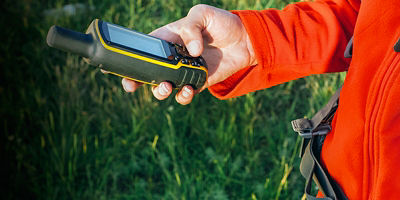
Plenty of gadgets serve an important purpose in the backcountry, from navigation to photography to emergency communication. So if you’re one of the many people who go camping and backpacking with a smartphone, satellite messenger, GPS, tablet, or laptop in tow, you’ll need a way to recharge your devices when you’re far from a wall plug or car charger.
Portable power devices, aka battery packs, power packs, or power stations, are an excellent solution. In general, electric power packs and stations are rechargeable batteries that you power up before your trip, then use to charge up your devices in the field. They range from pocket-sized battery packs that can recharge a smartphone once to large, heavy power stations capable of running a mini-fridge, and they can be paired with solar chargers or other sources of renewable energy for practically unlimited power in the backcountry. Here’s how to choose the best portable power devices and solar panels for you.
In this article, you’ll learn:
- The differences between a portable power pack and a power station
- How to evaluate a power pack’s capacity, power output, power source, and extra features
- How to choose among solar panel setups and power outputs
Power Pack or Power Station?
One of the first questions to ask yourself is: How much juice do I really need? Do I just need to top off my smartphone on a weekend backpacking trip, or do I want to run multiple devices at once for an extended basecamp? The answer will determine what kind of power device you’ll need. Here are the options.
Power Packs/Battery Packs
This category includes the smaller portable power devices. They’re compact and light, but provide much less energy than a larger power station. The smallest, most affordable ones can recharge a smartphone or MP3 player once; medium-sized ones are good for several recharges; and the largest, most expensive power packs can also handle multiple devices at once. Power packs are ideal for backpacking, and are probably enough on their own to handle a weekend trip’s worth of simple recharging. If you need more juice, pair one with portable solar panels.
Power Stations
These devices are significantly larger and heavier than power packs, so they’re best for car camping, base camping, and home emergencies. They have the capacity to recharge power-hungry devices like laptops, tablets, lights, and even mini-refrigerators or TVs, and usually have several different kinds of ports. Power stations cost several hundred to several thousand dollars, depending on their size and capacity, and also pair with solar panels for extended use.





















